Introduction
Last Tuesday, I made my first-ever podcast appearance on the Momentum Financial YouTube channel. For my debut, I decided to discuss Card Factory since it's one of my most liquid stocks and is listed on a major, well-known exchange. I apologize if you've seen posts about this company before. Below, you'll find the full video.
In addition, I've included a complete transcript with slides and timestamps for those who prefer to read about specific slides regarding the company. I would like to extend my gratitude to Capi and the rest of the Momentum crew for inviting me to join them.
I would also appreciate any intelligence on this format:
Full Transcript
In the text below, regular font represents my own words, while italicized text denotes dialogue spoken by Capi. I'd appreciate your feedback on this format and any suggestions for improvement as I continue with future podcast appearances.
Slide1 - [00:00]
Iggy, how are you doing?
I'm doing great, thank you, Capi.
Okay, so well, first of all, thank you so much for being here. You have been very, very into, very keen to join us with this thesis, we have been speaking for the past two or three weeks, so thank you for that. And I must say that I didn't know you quite well, but there are, there are some people that knows a lot of people around on Twitter, etc., like good, really good investors. And I remember once that they told me, 'You need to speak with this guy.' And he's like, 'Okay, but who is this guy?' And they told me he's really good with small caps, small caps in the UK, but also in Poland, etc., so you need to speak with the guy. And of course, I did it because that's kind of my job, right? Yeah, so my own key job in you guys, actually. Okay, so if you want, you can start, but before we start, just the disclaimer that none of the content that we will see here in this program is advice to buy or sell any shares that we will discuss here. So please make sure that you do your own due diligence. And based on that, I think that we can start again.
Yeah, thank you for that introduction. And like Capi said, I will be presenting one of my small-cap ideas today. We'll be talking about Cart Factory, which is a UK-listed stock. It's a small cap with a market cap of, let's say, 361 million pounds. The market cap currently, and trading today, I think at something like 105p per share. It's actually fully listed, so this is not an AIM stock. It's on the major exchange. So I think trading it should also be relatively easy.
Slide 2 - [02:31]
Short introduction about myself. Like Capi said, I love sharing my ideas on Twitter. I think that's also the best place to reach out to me. @IggyOnInvesting is my Twitter handle or 'X' as we call it today. Otherwise, if you don't like Twitter, you can reach me via email at IggyOnInvesting@gmail.com. And if you really want my deep dives, I also write full-length articles and stock pitches, like you're going to see today, on my SubStack. I'm currently in a small race with a friend of mine. So any new subscribers to the SubStack would be hugely appreciated if you like the work. Like Capi said, there are some Polish stocks on there, even a small Greek financial. So stuff that I think is hard to find in other places, but I think has a huge upside. So really interesting.
And before you continue, I must say, Iggy, that we will help you to win that race, but probably your colleague will be here, maybe soon, who knows. So, then you've spoken to him already. You can share the link now. And if you are okay, what we can do is put the link to the SubStack in the description of the video. So people can reach out directly from there.
Perfect, Perfect, So let's dive in.
Slide 3 - [03:48]
Yes. Okay, a quick overview of what I'll be talking about today. I'll start with a quick summary of the pitch to see if you guys are interested. Then I'll talk about the business model first, because I think it's the most key thing to understand about this business. After that, I'll provide a quick rundown of the recent pricing history, which is quite interesting and illustrative of where the stock is today. I'll also discuss some notes on management and the financials. Then I'll delve into the current growth initiatives that are in place. Next, I'll provide an overview of how I see the competitive landscape. After that, I'll briefly discuss some risk factors that people bring up with this stock. And finally, the last piece will be the valuation, of course, because we want to know what this thing is worth.
Slide 4 - [04:35]
Okay, so the summary of the pitch: Card Factory is a very optically cheap stock. If you were to look just at Google Finance today, you'll see it trades at something like an 8PE. That might suggest to you that it's a very low-quality company that should trade at a low PE, but actually, Card Factory is, in my opinion, a very high-quality business. I'll try to show you guys today. Additionally, it's been ranked as the number one value-for-money retailer in the UK for many years now. And this is not just within their niche; this is for all value-for-money retailers in the UK. For example, number two is Aldi, and Card Factory even has pop-up stores in Aldi. So they're really dominant in the value-for-money niche. I just want to emphasize that this is very culturally significant in the UK.
So yeah, like most of the people watching this video are probably from Spain, and we don't have this kind of business. So I understand that for them, it's like, 'I mean, I wouldn't ever be buying anything here. So what's the point of this kind of business?' And I can understand that because I'm Spanish, but I've been living in the UK for 11 years. So at the same time, I can understand that you see it all the time there. Just to give you an example, when people are moving to another job, you give them a card. During Christmas, you give people a card. When it's someone's birthday, you give them a card. So it's the kind of business that's very, very cultural there. Trust me, if you think about the business, it's like what, 5p to create one of those cards, and they sell it for two or three pounds. So the margins, as you'll see later, are huge here, but it's something that honestly, people really use.
To further illustrate that, I think currently the average UK resident buys something like 24 cards a year, right? So, this is a habitual thing that people have to do quite often. And I think right now, around 80% of UK adults buy cards. And my guess is that the other 20% don't buy them because their partner already buys them. This is something you have to buy if you live in Northern Europe, basically.
Yeah. Yeah. Yeah.
But like we said, this is a cultural thing, and they're very dominant in these cultural needs. By volume, they sell one-third of all greeting cards in the UK. This is a very, very slowly declining market. The market has been declining in terms of volume, maybe one or two percent a year. This has stalled, however, in recent years. But this decline in the market has basically hurt competition much more. And this has been hastened, basically, by COVID. So they're very dominant, and basically, other competitors are going bankrupt or closing stores, which means shelf space is decreasing much faster than the demand for these greeting cards is declining, which I think is a very attractive setup for this company.
Slide 5 - [07:46]
Yeah. So I think the key thing to understand for this whole story, why Card Factory is so dominant and so cash-generative, while all the other competitors are failing, is to understand that they have a vertically integrated business model. So basically, they start off taking in commodities. They buy paper and ink, let's say, to print cards. Because these are commodities and they are dominant, they have very attractive vendor financing. They have basically always negative working capital. They don't need to put any working capital into the business themselves, as their suppliers basically need them as a large customer.
Then they design their own cards and complementary products. They have their own printing facility onshore in the UK, in Yorkshire. It's important to know that this location is not fully utilized yet. I think there is room for a volume expansion of maybe 40% without buying a new location. So that is a huge opportunity for growth if they just manage to optimize this one, basically printing location. And then they own their own stores and their own distribution fleet that they use to sell to these stores. This whole chain where they really focus on cost discipline, and of course, they own everything. So there's nobody taking a small cut along the way. Basically, this means they have a much better value proposition than anybody else selling cards in the UK.
Like I said, they sell one-third of the cards in the UK, 33% volume share. However, by value share, so in money earned on cards, they're only 15%. This basically shows you that they sell things for half the price that competitors are doing, right? And this leads to this huge value proposition that makes them the number one value-for-money retailer in the UK and makes them hugely cash-generative. If you take in commodities and you basically print cash at the end of the cycle, it's a really good business model.
Yeah, and one thing that I would say about the business model, and I don't know if you agree, but being that integrated, for me, what it means is like volume, in a way, is everything, right? Because you might think in that the business, it's something like, 'Okay, I buy every card at 50p, for example, that's two pounds, okay?' So in a way, the volume, you don't care, you know, because you buy at 50 and you sell at two. But when you're integrating everything, if you are selling double the number of cards, the cost in the design is more or less the same. If you already have the factory, but you are like producing, I don't know, like 20% more, the cost is not going to be the same, you know? So the volume is going to be impacting here, the margins of the...
Yeah, exactly. Now the marginal cost, right now for them, is so much lower than the competition because, like you said, they have this design team and any extra card you print, you don't have to make a new design, right? So you're right, the marginal cost here is a huge advantage when the volume increases, and they can spread the marginal cost basically over the fixed cost. It's a huge, huge advantage that other people cannot copy.
And another important thing is that this business model in this sector is unique, it's just them.
Yes, I'll explain a little bit more when we get to the competition part. There are two other big players that have another model that I think is basically much less advantageous than this model.
Okay, perfect, let's go.
Slide 6 - [11:13]
Yes, I'll do a quick story of the price chart because it's quite wild, and I think it's nice to know a little bit of recent history about the stock. If we start at the start of the graph at the end of 2019, you can see the red and the orange line. The red line is the full market capitalization, and the orange line is the total enterprise value where I've added the net debt, but I have not added the leases. So it's just adding the net debt. As you can see, even before COVID at the end of 2019, the company started quite a big drop. This was basically because people were very dissatisfied with the bottom-line performance. The company had been growing revenue for a very long time but faced some cost pressures on the operating side, currency problems, store wage increases, and all that. Basically, the bottom line dropped a bit, and investors were very dissatisfied. So it dropped already pre-COVID, and then of course when the COVID pandemic hit, Card Factory went down a lot because they were a leveraged retailer who had both debt and leases going into the pandemic with their whole physical store portfolio closed.
And basically, it looked like this business was going bankrupt. To worsen these problems at the middle of 2020, the CEO, Chau, basically disappeared, or at least left the company. She didn't disappear. So the company was basically looking like it was going bankrupt and at a note CEO. But luckily, finally, at the start of 2021, the company did announce that they got a new CEO, and I think he's somewhat key to the story because he's done really good things since then. As you can see, around a similar time, the stock was on an uptick as the pandemic was easing a bit, and people thought stores might be able to reopen partially during 2021. However, right after this rise, the company had to agree with our banking syndicate on a refinancing deal that could help them pay off the government debt that they used to survive the pandemic. And there was basically a condition in this debt refinancing that within a year they had to repay 70 million pounds of this debt in any way possible, either by cash or by issuing support and debt or raising new equity. So suddenly, what looked like a reopening play that had done a refinancing just looked like a company that was going into a hugely disadvantaged dilutive situation.
However, as you can see, finally, around I think March or May of 2022, the banking syndicate waived this dilution requirement, and this is all really due to efforts by the management team to pull cash out of working capital. So they didn't have full store openings during 2021, but they managed to make good money, I think during Christmas, maybe 20 million of profit, and basically, the rest of the 70 million they were able to pull out of working capital using, let's say, vendor financing and all that. This further illustrates their market power and how easy it is for them to pull cash basically out of nowhere, and in this way, management was able to prevent this dilution. Another interesting fact, of course, about preventing this dilution, which was very hard, is that the CEO and the board didn't own that much stock, and especially the CEO is new. So basically, he could have said, 'Hey, the previous management used too much debt, there was the corona, there's no other route than to dilute.' But even while standing to gain relatively little, this guy basically put in all effort to prevent the dilution and in the end was successful. So I think that's really impressive and important to keep in mind.
And then basically at the end of the graph, you can see the stock has started a pretty strong uptrend in the last half a year. 2022 was a good year. They basically beat all the estimates they put out. They have now also started raising their estimates for this year. So the stock is in a huge uptrend. However, as you can see, because of the debt repayment right now, the total enterprise value is much closer to the market cap than it's historically been. So the movement in the total price of the company is much less than you would maybe think at first sight because so much of this gain is actually just because of debt reduction.
One question if the business model is that good what what they did wrong to end up with so much debt?
It wasn't a mistake, basically. So what happened, if we go farther back, is that they were owned by private equity until 2016, I think, or maybe 2014. Private equity ran the business basically using all debt, so they had a balance sheet with 400 million of debt on it, I think, which is more than the current market cap, mind you. Well, the business was much smaller then. When they brought it public, they used a part of the proceeds of the IPO, I think, to pay down debt because public markets don't like LBOs that are debt-levered. But they basically did keep a sort of LBO structure. So what they did is they basically ran with, I think, a three times leverage model and just paid out any cash flow they had in dividends, basically, and just kept the leverage component constant. So it was just a very leveraged business in the way they ran it as a sort of financial engineering play.
Okay the kind of the private equity wanted them to be leveraged probably in a way because they were taking all the cash flow out right?
Exactly that that's been the history of this company just run it left and take any cash that it generates out and that works until the pandemic hits.
yeah okay perfect and now I guess that with the new CEO and the kind of idea and objective that they have a long term company almost no leverage I guess because I don't know I mean I can't see well maybe maybe you can tell us something about that but I can't see any kind of acquisitions in this sector they wouldn't need to move to something else.
Yeah, yeah, I think the board has like a target of running levered one times to 1.5 times EBITDA, which they're actually below right now. But they don't seem that eager to raise the debt again. I think they want to be truly clear with the pandemic. They have some big capex in the next two years that they want to commit to and try with the growth plan. But somewhere in the next two to three to five years, I think they will take the leverage up again. So that's also something that could be quite attractive, and you're right, I think they're opportunistic because we'll get into the growth that they want to do. I think if they see something they want to buy, they might actually do it.
Okay, well, again, they have room to do it. It's just difficult for me to think like what they can buy. But there is more, but the kind of capex. I don't know if you're going to speak later about that. That kind of capex is because of new factories or is it because of opening new stores or...
Yeah, I'll get to that because there are four points. They're quite different, but I have a good slide on it. So in a minute, we'll talk about what the capex will be going to.
Slide 7 - [18:57]
Yeah, I'll do a short overview of the management team. I think the most important person is the new CEO who came in during the corona period. He's a Canadian called Darsey Willson-Rymer, and before he joined Card Factory, he was the CEO of Cost Cutters, another value retailer in the UK, for eight years. So I think he's really fit for the job. Actually, during his time at cost cutters, he did something very, very impressive where basically their main supplier, they're basically a grocery/supermarket set, with 24-hour notice that they were pulling the plug and that they wouldn't supply them anymore. And in this same 24-hour period, him and his CFO managed to strike a deal with a co-op and make sure that the stores were supplied and open 24 hours later. So it's a really, really impressive story, I think. And basically, like I said, I think his time at Card Factory has been really impressive as well. He came in, basically, immediately was facing the dilution problem. He managed to prevent the dilution. While they were facing all this, they managed to implement a new ERP system that has made the company much more data-driven and gives them, I think, a huge advantage because now they have much more volume than any other competitor, and now they can track the data very efficiently. So they have really become a sort of data and customer-focused business because of this new ERP system. And they did all this while pulling as much cash out of the business as possible. So I think operationally in retailing, I think he's really, really good, and retailing is hard, and it's always a bit of a jockey bet, and I'm very comfortable with this guy. Apparently, he was very impressed with his own CFO at cost cutters because he's actually right now joining Card Factory as well, replacing the previous CFO. So I guess Darcy thinks very highly of him. And then the chairman of the board is also actually quite an impressive gentleman. He's Paul Moody, and he's been eight years the CEO of Britvic, a soft drinks company from the UK that's also publicly listed, and he's the person that took it public. So I think we have a team that's good at retailing, has good public market experience, so I'm very comfortable with this management team.
Slide 8 - [21:22]
Okay, let's do a quick highlight of the financials. Like I said, Card Factory has been very cash-generative and has managed to basically grow their revenue every year pre-pandemic, as we've said before, because they can spread their costs so thinly and they have this value proposition. They can basically be very profitable while having very competitive gross margins. So what happens here is they have a 30 to 35 percent gross margin on a product that's already cheap, but then their actual operating margins are not that much lower. They run at 15 to 20 percent, which is actually high for a retailer, whereas retail normally has 50 percent gross margins. So this really shows this sort of value focus that Card Factory has. There's a quote, of course, that always gets attributed, I think, to Jeff Bezos. I don't know if it's his, but they say 'your margin is my opportunity,' and basically, Card Factory is taking from other players, and they leave no other opportunity to take from them because they have so much more competitive of a cost structure compared to other players.
As you can see in the years pre-pandemic, like we talked about, they ran a sort of LBO-style structure where you pay out as much cash as possible. Basically, the first three years of being public, they paid out more cash than they even had in net earnings, pulling the rest of the cash basically out of working capital. And then the two years before the pandemic when it starts struggling, it basically becomes in line, but you can see the cash generation here is basically one-on-one with net earnings, which is also a really good sign, especially for a growing company. It just shows how strong their working capital cycle is.
If we look at the balance sheet, we are at a historically low net debt. Like I said, I think there's only 65 million left that we know right now, but H1 is done already, so I think it will probably be even lower. And like I said, pre-pandemic, they ran with 150 million. The private equity guys ran with 400 million euros or pounds of debt on it, so I think it can take more. It's not required for good returns, but just something to keep in mind.
If we look at basically the earnings trend at the bottom line, you can see why the company is so much shunned by investors because basically from going public to in 2016 until now, the net earnings have been going down while revenue has been basically growing. So people think this is a sort of 'left for dead' business that doesn't have a good cost structure anymore. But I think that's mainly because of the previous CEO, combined with some Brexit stuff and minimum wage increases. I think the new management has very reputable plans in place to basically start growing the bottom line as well again.
Can I ask you one thing about, sorry Iggy, to interrupt about the debt? I don't know if you have something there, or I can ask here, but like two questions. The first one is like the debt that they have, is it mainly fixed-rate or is it variable? I don't know, but it's like bonds or banking or what?
No, it's with our banking syndicate. I think it's variable. I think, at least the part of it is because it's basically they also use a sort of working capital line, and those tend to be variable. Yeah, I don't remember in the latest financing how it's structured, but there's a variable component for sure.
I mean, if it's with banking, I would say almost certainly that it's variable because that's the way that they usually work.
Okay, yeah, yeah. So they have a banking syndicate of three banks, so...
Okay, in terms of the interest that they pay, for sure in the last, let's say, 18 months, it's something that has increased. But I guess that as they are not kind of over-leveraged, it's not something that is like dangerous, right?
Yeah, so in terms of a percentage, it has increased. But I think in absolute terms, because the debt payment has been so quick, it's actually decreased. Yeah, yeah, exactly. If you're going to do projections, project less interest payments. But you're right, in percentage terms, it will be a bit more.
And in a way, if you think about it, it's a good time to pay down debt.
Yeah, exactly. Debt is expensive right now, so it's not bad to buy it back now, and then when the markets are good again, increase the leverage again, and you have magic in stock basically.
Yeah, exactly. Okay good thank you.
Yeah, then a last point to note: the company has very high returns on capital that is also required to grow revenues. Well, basically paying out all your earnings. If you look at any quick screen, the returns might seem quite normal, but it's very important to note that there is a £300 million goodwill item on the balance sheet. Once you subtract that to get to the return on tangible equity, you'll realize the business runs on negative tangible equity. So actually, this business requires no equity to run itself. It's basically financed by the landlords and the people who provide their working capital, their suppliers. And then because they have a little bit of debt, it takes into negative tangible equity, which I think is hugely attractive if you manage to grow, which is an 'if,' but like I'll show, I think they have very credible growth plans.
Slide 9 - [27:03]
Yes, so the new management strategy has basically four pillars to it. Pre-pandemic, the business was run rather mindlessly, I think. They just tried to open new stores because this is what worked for 20 years. But at one-third market share, I think they were feeling some friction there, right? Because they were becoming such a big part of the market, it was hard to find good new store locations. I think the first and most important thing that management is changing is now that they have the new ERP system, they are really focused on selling more gifts and increasingly attach rate for gifts to cards. So 70% of the greeting cards in the UK are given to someone attached to a gift. Card Factory has been selling gifts for some time, but their attach rate is still relatively low. Basically, now their design team is focused on creating combinations, and they have been trying store remodels whereby they place all the cards around the perimeter of the store and then have more space in the center of the store for a wider selection of gifts. And if you think about this, this can be hugely accretive to both earnings and revenue because somebody buys a card for maybe one or two pounds, that's a nice card. Card Factory is very good at doing that in huge volumes. But let's say a decent percentage of these people start attaching a gift that's maybe £10, £15, £20. Certainly, the basket size of your average customer goes up a lot, and this is, of course, very, very attractive. This is a somewhat proven model because there's an online card seller called MoonPig that has a similar strategy. We basically know that this works. The company has been trialing it in these new stores, and they basically say every remodel or store in this way pays back for itself in one or two years. So this is again a very high return on investment sort of change.
Then another change spurred along by the pandemic is that they finally got basically their internet sites in order. They're now really focused on becoming an omnichannel retailer. They have increased the assortment on their website. They have improved the tech behind their website, and they have trialed basically in-store pickup. And I think this is especially useful for the type of dudes who forget - mothers-day or maybe their girlfriend's birthday. You can last-minute order a gift online, jump into the store, get a card with it, and you're done within one day without any hassle. So I think this will also be an attractive avenue that many people would like.
I think it makes a lot of sense because if you think about it, like when you are, as you say, the mind that you go for a card for a birthday, for example, you, at the same time that you get the card, you can have like a small gift that is like £10, £15, up to £20. You have both things in the same place, and that's it, right?
Exactly, it just saves you time. And they're actually much better at the other place, right? Because they have pretty good data now, they even do sort of gifts that go well with these cards. So a funny example that they found this year in their data is that people in the UK, I think maybe because they have fewer kids, care more about their pets and are actually people who buy cards for their pets and gifts, and this is actually a combo deal that they did incredibly well, right? And this... I couldn't have made it up. This is things that you only identify if you're really, really good at working with trends and your own data, basically. So that's again a huge advantage of the skill and the data they have.
Then, I guess the third pillar is that they're new markets for just stores. There is still some room. They know they can still grow profitably by opening new stores in Ireland, and they've been trialing stores in central London. Central London is a huge part, of course, of British GDP, but its dynamics are very different than the rest of the country. So they have to basically find another sort of format store with maybe some higher-end type stuff that works there. And I think this also illustrates why this company is maybe not that loved by local market participants because they're all central London bankers who don't see Card Factory that much, is my guess, whereas in other parts of the country, it's more dominant.
And finally, international expansion. So from their printing facility, they already supply some other partners. Like I said, they are the supplier of greeting cards to all the UK. They supply cards to The Reject Shop in Australia, and they're basically looking for partners in many more countries where they can just start supplying the gifts, sometimes even start franchise agreements where people start actually stores under the Card Factory brand. And this too is basically a proven concept for them. It's just a question of finding the right partners in the right places. But they have the printing capacity, they have the designs, so this is again a lower-risk way to grow. I think this is also maybe the part of the strategy that, in some sense, has the most upside. They're now trying many small countries. That's very small, but the only greeting card market that's bigger than the UK is the US. The US, I think, will be hard for them to enter, but if they somehow manage to find the right partner, then I think the stock should rerate hugely, right? If they somehow manage to enter the US because then there's such a big market opportunity for them to just increase their designs and printing. Yeah, I think then the stock is a true home run, not currently counting on it, but something that is a possibility.
Slide 10 - [32:57
Yes, then, to mention the sort of competitive landscape because, like you said, many of your viewers are Spanish, and they probably don't know where you can buy cards in the UK. Here is a slightly older graph of many of the places people buy greeting cards, and it basically ranks the perception of low price if you go up in the graph and the perception of quality. You see, basically, in this graph, that in terms of these two factors, Card Factory is in a league of its own. It's basically rated with some of the highest quality cards, together with some of the other specialists. And basically, weight rows, however, they actually have the best price perception, right? So, better than even some of the true discounters, and this is again because of their integrated business model.
Then, I crossed out a couple of important players. These are basically all other specialists, so these are true greeting card retailers. Clintons and Paperchase are, I guess, the biggest ones you see in the bottom right corner. Paperchase is...
One that you can also find Cards Galore…
Yeah, yeah, Cards Galore, I crossed out as well. But Clintons or Paperchase is already bankrupt. They had a hundred stores, that's basically a tenth of what Card Factory has, but a decent chunk of the market. They went bankrupt during corona; their brand was bought, but the stores were never opened again. Then Clintons, I guess, is the biggest after the Card Factory. They are going bankrupt as well. They've been in administration seven times. They're currently again in the process of closing stores; they have huge cash flow problems. Their website has been down for two years, so this is also not a strong competitor. Cards Galore, again, their website looks like a mess, so I guess they have cash flow problems.
Card Markt, I can find nothing about anymore. Basically, this looks like a sort of competitive graph that suggests that there's a lot, a lot of competition, many people who sell these things. But what's important to realize is that basically all other players are supplied by only two American companies, American Greetings and Hallmark. These two have basically dominated the market for a long, long time and they run basically a high price model whereby they have a little bit of shelf space in many places, but these cards are basically double the price. And they are seeing all the volume declines in the market because some of their customers are going bankrupt.
I think the most marginal buyers of greeting cards probably did buy them at, let's say, Tesco. So these people are seeing the volume declines, but they still have a powerful market position, which means they just offset this by doing a price increase. But this, of course, further strengthens the value proposition that Card Factory has. So if you look at the market environment in this way, they have a business model that works and basically keep going from strength to strength.
And does Card Factory sell to any of the supermarkets?
Yes only to Aldi the UK
only Aldi?
Aldi UK yeah yeah yeah.
Because I guess that, yeah, what I can see from leaving here is that, yeah, mainly the supermarkets, but of course, it's just a little big one, right? Like when you go to a big Tesco or a big Sainsbury's or whatever, you can find a section there that is with the cards, etc. So, yeah, it's interesting because I guess that if they are interested in growing in terms of volume, probably, of course, the margin is going to be lower, but they have always the possibility to go to a Tesco or Sainsbury's or a Asda and retail to deal. And I guess that if they are not doing that now, it's because, of course, the margins are going to be way lower. Just to give you an example, if they are selling in one of their stores one greeting card for two pounds, if they sell the same greeting card to us, that is going to be like 40p or so.
Yeah, exactly, yeah. There is a sort of speculation that American Greetings is very integrated with Clintons; they were the owners of Clintons. There is some speculation that if Clintons goes bankrupt, which might happen, that American Greetings basically also is not a viable business anymore. If that's the case, then there would be a huge opportunity, of course, for them to just put on the printing press and take any of the shelf space that's left by American Greetings. But this is a big, big speculation. I think they will survive, but it's also actually the relationship between Clintons and American Greetings is kind of shareholders. Or is the kind of them, like 20 million or so?
No, so how it works is American Greetings is owned by a rich family, and this rich family basically also owns Clintons, and Clintons buy all its cards from American Greetings. Okay, okay, yeah, we need to see the internal accounts because maybe like, you know, like Clintons need to pay like a huge ton of money right now to American greetings, and if they go bankrupt, it's going to be impacting American Greetings. Exactly, and they're big off-takers. So, I guess that they have both bills that they still need to pay to American Greetings, and if they stop purchasing cards, it's actually a very big account for them, as my guess, because they have saved the company basically seven times. Clintons has been in administration seven times, and every time it gets saved by the same family.
Slide 11 - [38:32]
Here's another graph that shows the competitive landscape from a different way. Here, they have going up again value for money, and then a wide range of cards. Again, you can see that Card Factory is basically in the league of its own. And then you can also see why they have a better range than the other specialists and better prices.
My guess is, and like I've already shown, basically all other specialists are in the process of exiting the market because these business models just don't work anymore, with one exception. There is an online player that gained some ground during COVID and even before that, that's called MoonPig. I think it has a sustainable business model, but it doesn't really pose a threat to Card Factory as their fully online presence does require them to have much higher prices, basically.
Slide 12 - [39:32]
To shortly discuss some of the risk factors. The first one is leverage. Leverage got the company in problems in the past, and again, they run a sort of double leverage model. They rent all their stores, and they use some debt. But as I've shown, especially currently, the debt load is very, very low, and the company is very, very cash-generative, and even managed to survive COVID. So, the leverage is not something that worries me. They can easily pay for the leverage they have with future cash flows.
Then, the market decline in the greeting card market. Like I said, it's been a very, very slow decline that's basically been stabilizing. And I hope, like I've illustrated, actually, the market is declining in terms of supply, so the shelf space provided by other retailers, much quicker than demand is declining. Demand isn't declining fast at all, maybe 1% a year. My guess is it's actually stabilizing, but like I said, all other specialists who make up between 20 and 25% of the market are facing problems.
Then, with any retailer in the last 10 years, people say, 'But why don't people buy on Amazon? Why don't people buy it online?' Well, greeting cards as a standalone have been very online-resistant. Why this is, I think, is quite obvious. You're not gonna order a £1.29 card and then also pay a £1 fee to send it to you. That's just not good economics for any of the people involved. However, like I said, Moonpig has figured out a model that works online for greeting cards, but this is mainly by bundling them with gifts. And like I said, once you attach a card to a gift, suddenly the package is maybe £15, and then it does start making sense for other participants to order something like this online.
However, I would say that Moonpig is probably more oriented to young people, you know? I mean, I know that people who are 60 or 65 in the UK, I can't see them going into an app to do that. I mean, they love to go to the shop, you know? Like, they go shopping or something, and the Card Factory is there, and they go in, you know, while they are doing some errands, and that's it.Yeah, I just think that I have seen that for the people.
Yeah, yeah, and basically, I think with Card Factory getting their online part basically with better tech and more range, I think they're also very well positioned to compete with Moonpig because Moonpig runs gross margins of 50%. They have huge marketing costs. They have a Dutch arm as well called Greets, and to do some scull about, I looked at their website once, and then every ad I saw, I think for two weeks, was them because they don't want me to forget about them. I think it just isn't something people think about enough to build a very strong brand that people keep coming back to. They might buy something custom once.
I think Card Factory here has an advantage, like we talked about, with the physical store locations because these function as a form of free marketing. They already have very high brand awareness, and the in-store pickup I think is a huge benefit, both in terms of speed and in terms of maybe if you want to bring back something. Right on the channel retailing is also quite a well-proven sort of model in retailing right now.
Then, the last risk, my guess would be that could concern people is that the CEO is new. The CO is new. I do think he has clearly acted in the interest of shareholders, though, and the compensation, his compensation, is 25% equity-based. So, it will be there for four years and be successful to actually earn more in equity than in salary in one year. But in the meantime, for example, something that would worry me is if a private equity bid came in. I don't know how hard they would fight to get the bid up. But again, it's not the worst risk to have that you get taken out by a private equity counterparty, I think.
Yeah I guess it just depends on the price that you go in right?
Exactly, but it's not the worst risk to have. But I would like to own this for a long time, as I think the goals that have been set are very credible and lead to good economics. Yeah, it's been private equity-owned in the past. I think there's a decent chance private equity takes it out again, but let's see, right?
Slide 13 - [44:31]
Yeah, yes. Well, tie this all together for a simple valuation. At a current P/E of 8, and given the strength of the business I hope me and copy were able to show you guys today, I think it's sort of obviously cheap. But if we do some looking into the future, the management goal with their growth is £600 million in revenue. They're currently at £450 million, so it's not even that much higher. At a 15% margin, that's also not even margin expansion. Current margins are 15%. If I give them eight years to achieve this, then by year eight, 2031, they would have £90 million in earnings power any year. If you put a 15 times multiple on that, which is the market multiple historically for the UK—I think it's actually 16, but I think that's conservative given the quality—you would basically get the following yield while holding it.
They are going to start probably paying a 5% dividend next year. That's my guess. It should basically increase a bit in the out years because to get the online fully working in the next two years, I think they're going to spend some big money. But after that, I really wouldn't know where they would spend half their money, so I think the dividend should actually increase. Then, if they reach these growth targets, it would be 8% growth a year, going from an 8 P/E to a 15 P/E. You would have 9% growth a year. So, holding it for 10 years or 8 years, actually, you would have more than a 20% yield, which is very good, right? Double the market, and actually, if you compound that, it's much, much more.
But it's important to illustrate that I actually think these assumptions are highly conservative because I give them 8 years. I use what I suspect is a low-ball estimate of the dividend yield, but their actual goal is to achieve these targets already by full year 27, which because of the way they report is actually more like full year 26. So, that is in, let's say, 3.5 years. If you put in those numbers, you get to a very, very high IRR. You get, I think, 30% plus, maybe.
It sounds like a reasonable valuation. Of course, it's not the kind of super tip company, but it's also true that usually, when you have a super super tip company, it's because the market is depressed for sure. But usually, those companies have some kind of trouble, right?
Yeah, I think it falls into no style bucket, right? Because you have a little bit of growth, and then actually, quite a fat dividend. And I think there's not that natural a sort of base of people who like this. The deep value guys go, 'This thing has no tangible equity,' and the growth guys go, 'But this thing is growing less than 10% a year, who's looking at this?' But I think if you put it all together, you suddenly realize, 'Oh, wait, this could have a very high return.
Yeah, yeah, yeah, yeah. And at the end, this is true. Also, okay, maybe you don't like their kind of business. You would like something like selling iPhones or, you know, like tech gadgets or whatever. But the reality is that they are the number one in their sector. They are the strongest one, you know, in terms of the balance sheet. They have the best business model of all the competitors. Competitors, as you said, are going bankrupt, which is going to be, of course, something that is good for them.
So, the thing is, they are very well positioned here. And one key part is the customer. It's the kind of business that actually is making a lot of money. The capital is not that high, and they can reinvest that kind of money, like sending back that money to the shareholders or reducing the debt, right? But there will be a point that, in two or three quarters, the debt will be really, really low. So there is a point where there is no point to reduce even more. So, at that point, is where maybe you have like extraordinary dividends, or if the share price is low, they can do buybacks or something like that.
So, yeah, it's also something to consider. And I don't know if it's something that you analyze in terms of the, because you know that in the UK, it's very famous that kind of retail doom, right? Like all the retail places that are going or being less interested because Amazon is taking it all. And it's something that I have seen to be first. Yeah, it's your view of putting back the Card Factory.
Yeah, it's a big thing in the UK where they always talk about the death of the high streets, and Card Factory is very exposed to the high street. Last year, for example, was actually a bad year for the high street, and Card Factory still did well. I think there are business models that won't work anymore, and those will be replaced in stores by new ones. Think of the growth in the number of coffee shops, or yeah, in English, you do call them coffee shops. In most places, people do want in-person experiences, but those might be different than the classical retail experiences.
But even though Card Factory is exposed to the high street in a very serious way, even last year, they weren't hurt by it much because their value proposition is so strong. And there are a couple of things here again, right? If the high streets become less attractive, Card Factory has short-term rents. They can actually say to their landlords, 'Hey, we're one of the only people who will be sure we'll be making money. We're a very safe tenant. We attract people we want. Let's say a 5% decrease in rent.' They actually have a pretty strong position towards these landlords as well if high streets don't perform basically.
I agree because at the end, also, think about it: these kinds of shops are so simple to build inside. So my point is that if on the same street you have one of those stores that is empty, and you can negotiate, and the rent is going to be half, it's easy just to close here and open there in two weeks.
Yeah, exactly. They have a very flexible approach to renting as well, so the average lease term right now is only two to three years, rather short. Yeah, like you said, there's nothing special in this store. They're like box-standard wooden shelves with paper cards. There are no coolers that have to be installed, no big security gates because you have expensive stuff. The capital expenditure (CapEx) that goes into a store is nothing. Like you say, if the store across the street is 50% cheaper, you get three movers, and in a day, you move to the other side. It's just they have so much power over anybody they interact with.
Yeah, and it's something that I saw with some companies in the UK. I remember, for example, that I guess that maybe you know Franco Manca, right? Like, do you know Franco Manca? It's actually not, yeah, it's a real chain in the UK that's very famous, and then there is another one that is The Real Greek. So, all of it was a group, okay? And one of the things that they said is that after COVID, they started to find rents really, really cheap. You know, that's something to take into consideration that even with inflation, my expectation is that in terms of the cost, they suit that iron, right? And I don't know if one data point that I am thinking now is like, I don't know what is the, how much it costs basically to open one store, like to renew and to put everything inside.
I don't know the exact number, but I know the payback period is very short. Like I said, basically, it requires no equity, so the cost is somewhat irrelevant, right? Because they feel they are paid for by their suppliers. And then, like you said, it's like a cash register and 10 shelves. So, what is the payback period for any new store they open? I think it's cash flow generated in the first year. And given their higher returns on capital, again, you cannot really put a payback period on it because they put no equity in it, so it's almost irrelevant. But I guess they pay for themselves in four to five years or so.
Something probably well. I would say I think that's good. But I'm just thinking the kind of in mind, you know, they give you the keys of that future store. Like the money that you spend to put the store and open is like what, maybe like 200k or something like that, you know?
Yeah, the shelves cost nothing, they have some shelves can now, but you're right, actually, the capital expenditure (CapEx) in the store is negligible. It's less than half a million for sure, much less. Yeah, I think 200k is a good target.
Okay, yeah, perfect. So thank you very much for the presentation. It's been a very interesting idea, and I think it's smart because, as you said, I think that, of course, we're at the point where small caps are being hammered. You get small caps even more, to be honest, because it looks like crap in the AI market. But that's the time, right? When one needs to buy, not when there is like kind of a frenzy, and everything is kind of expensive. So this is a very interesting one that, as you said, is not the value, is not growth; it's something in the middle. But at the end, this is a very good company, very cash-generative, that is turning around in the way that we expect. So very, very interesting.
And for everyone that is here, you can see the Twitter and also the Gmail, and of course, the SubStack from Iggy. So Iggy, thank you so much for coming here, and I hope that you come back soon with something from Poland, you know.
From Poland? Yeah, there's plenty of good stuff in Poland to talk about.
Yeah, and you know, I don't know if you know, but like I'm sure that you follow a lot of Spanish people on Twitter in the feed, and Polish companies are very, very popular, with good reason.
It's, I think, the cheapest developed market because I consider Poland developed by now.
I know, it's so true. Yeah, okay, perfect. So, hopefully, we will have you here again soon, and maybe even before your call, right? We will see. Yeah, for sure.
It was a lot of fun. I'll be happy to be back anytime. So, thank you. Very happy.
So, yeah, thank you. And for the people who are watching us, I'll finish in Spanish. Thank you. I hope you liked the idea, and if you liked it, you can put comments in Spanish or in English in the comments section. A like is always helpful, and of course, subscribe to the channel. Thank you all. A greeting.

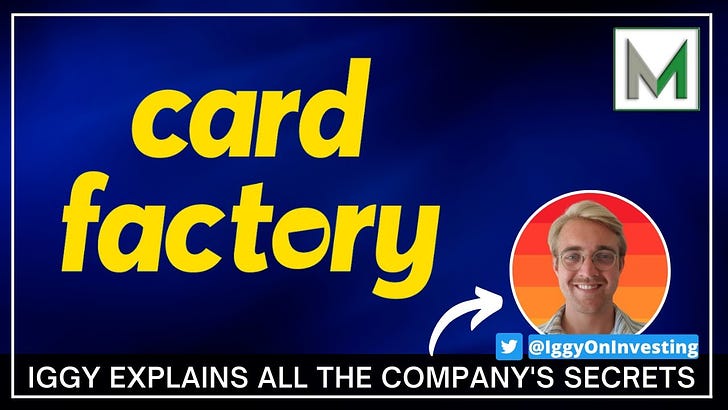


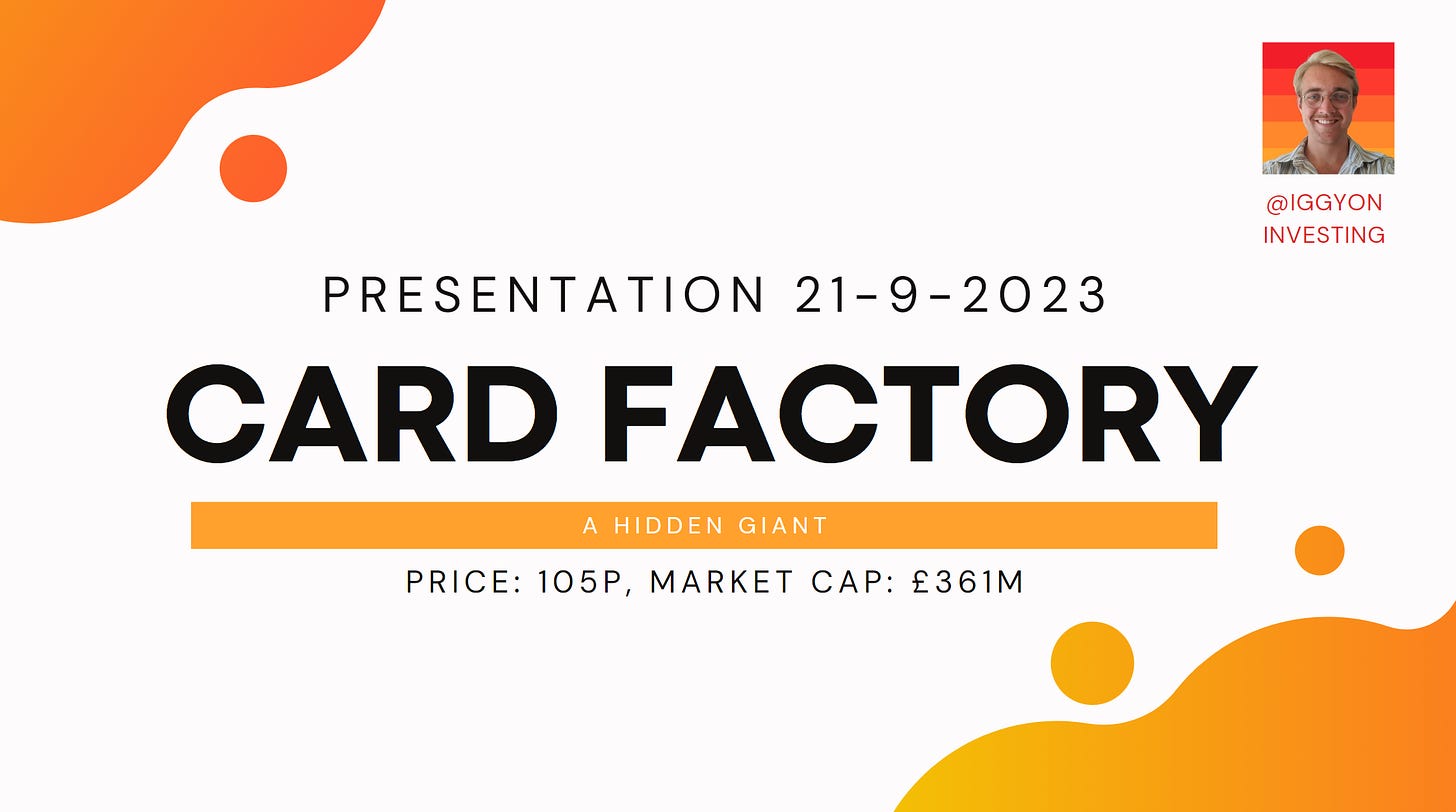
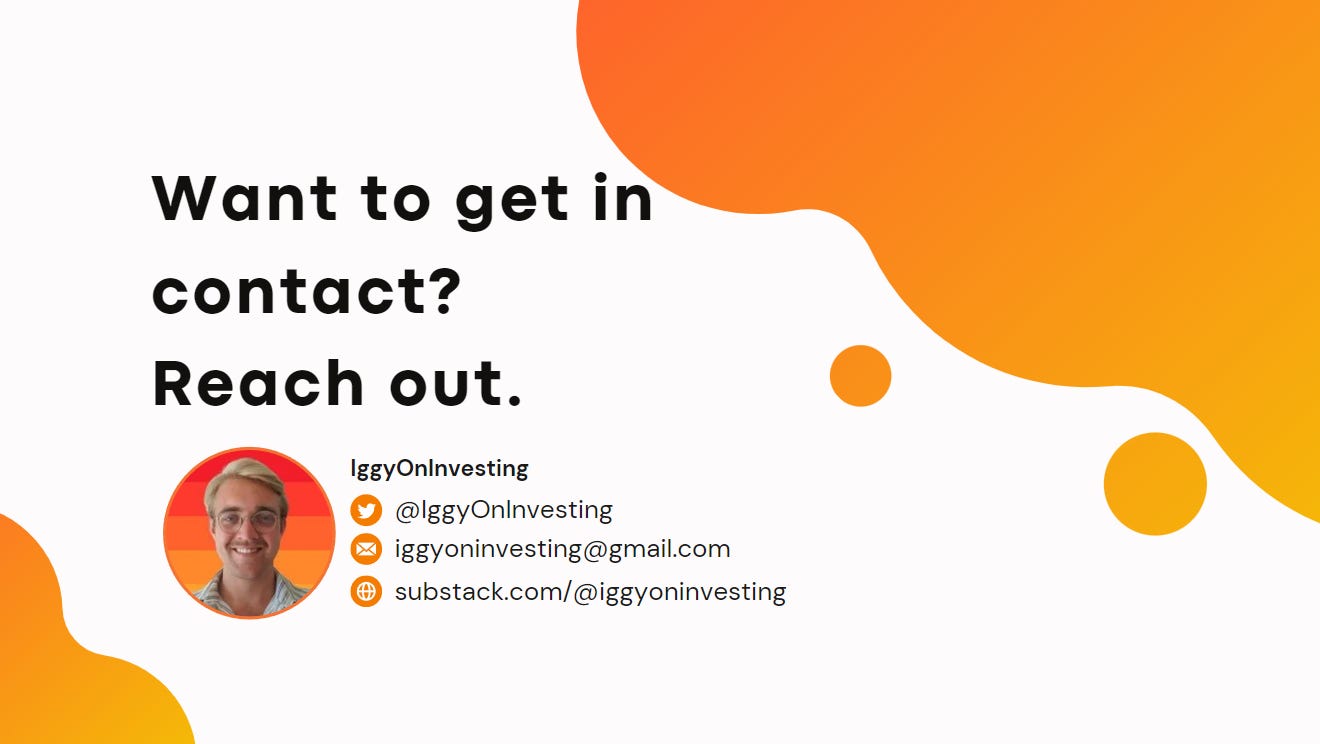
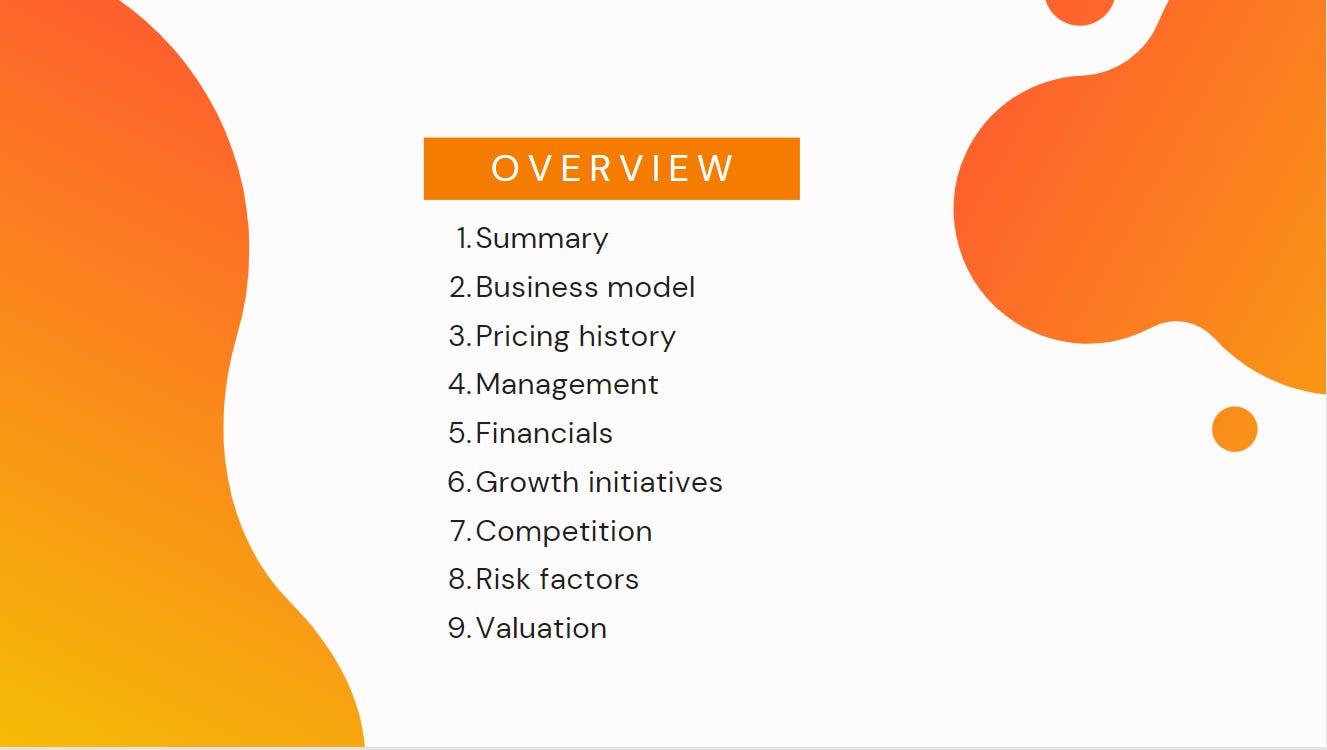
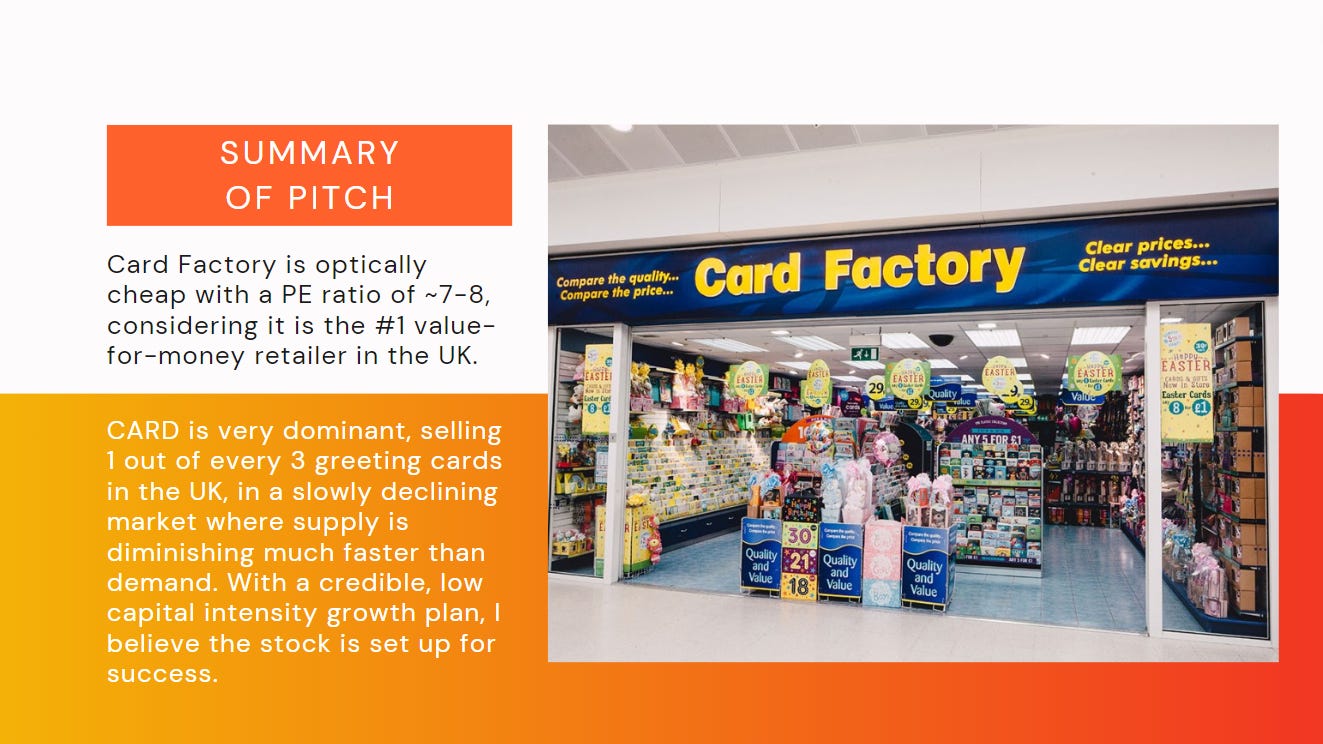
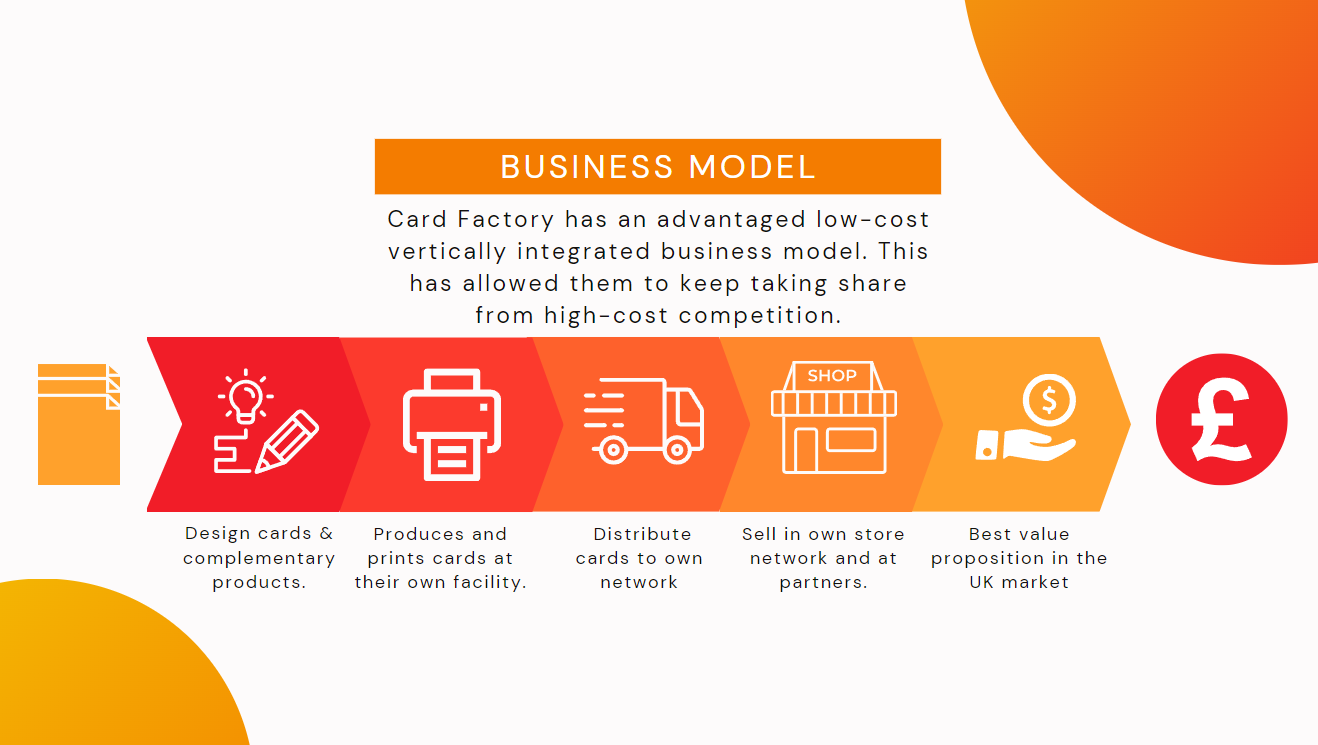
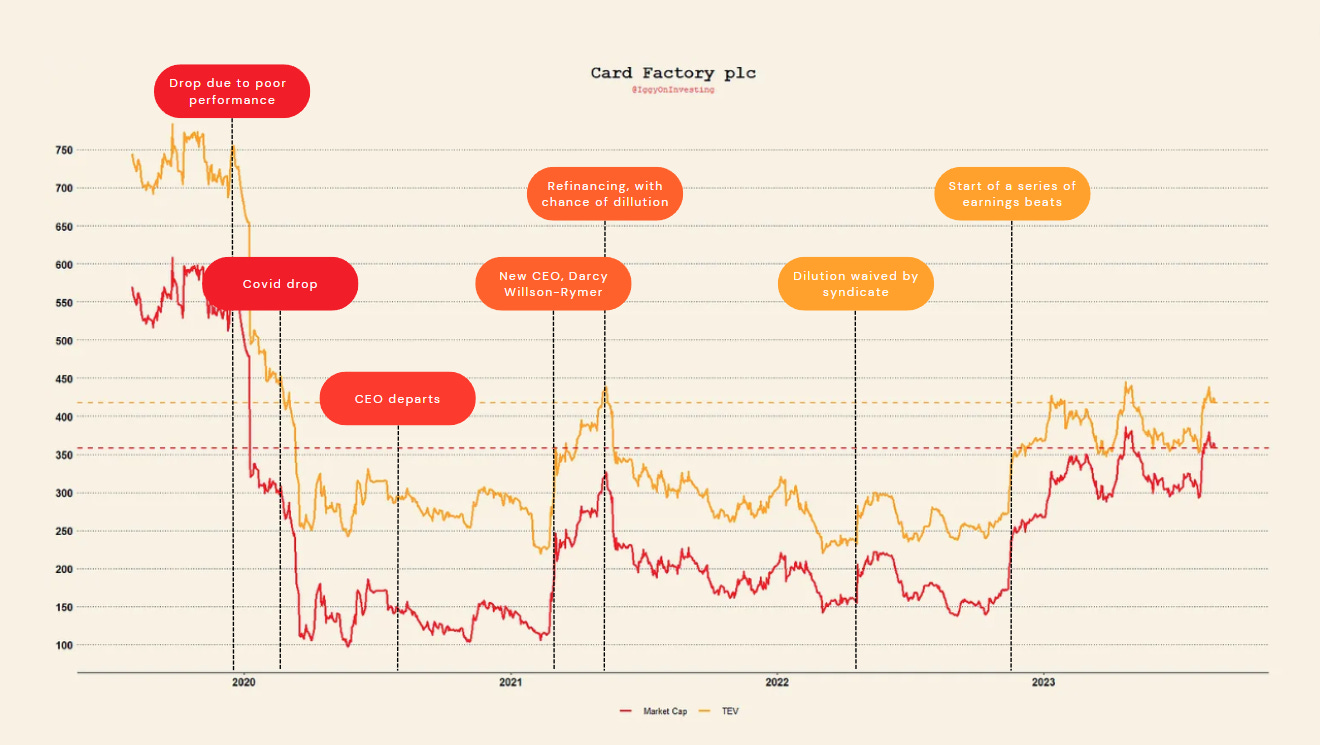
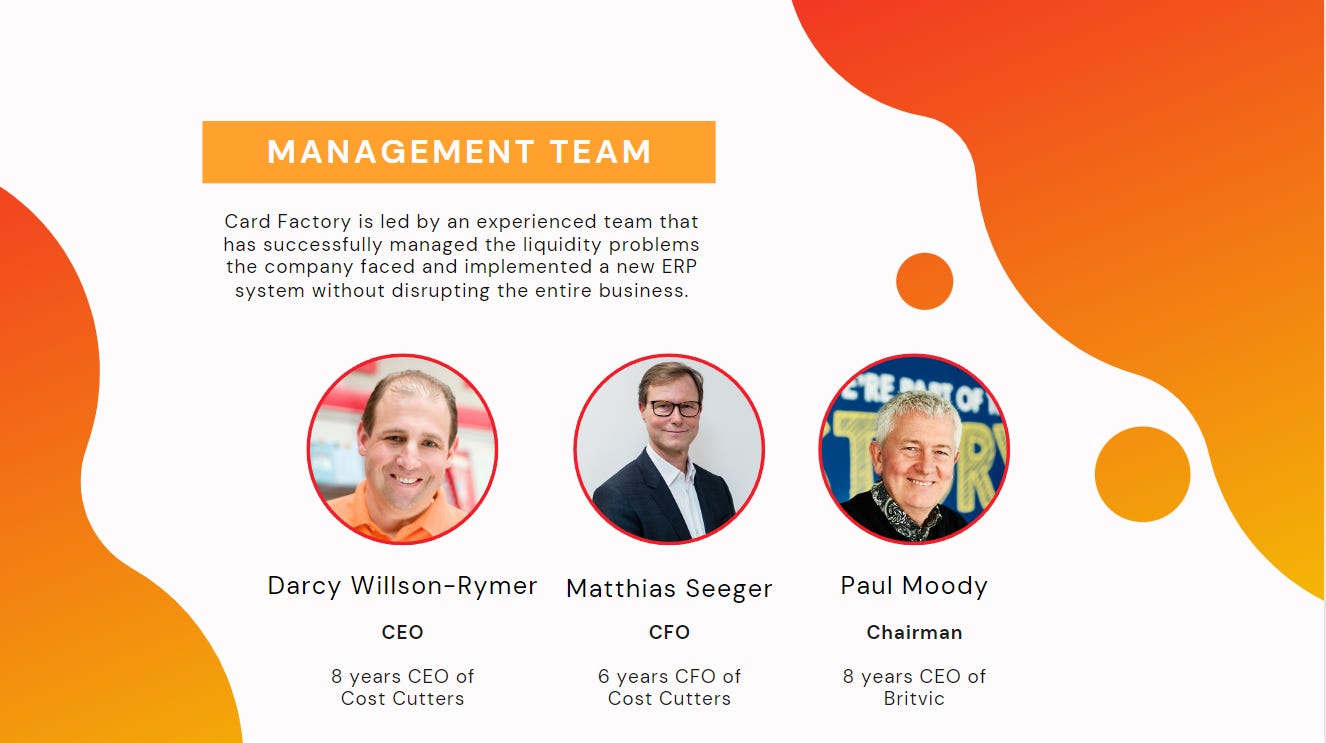
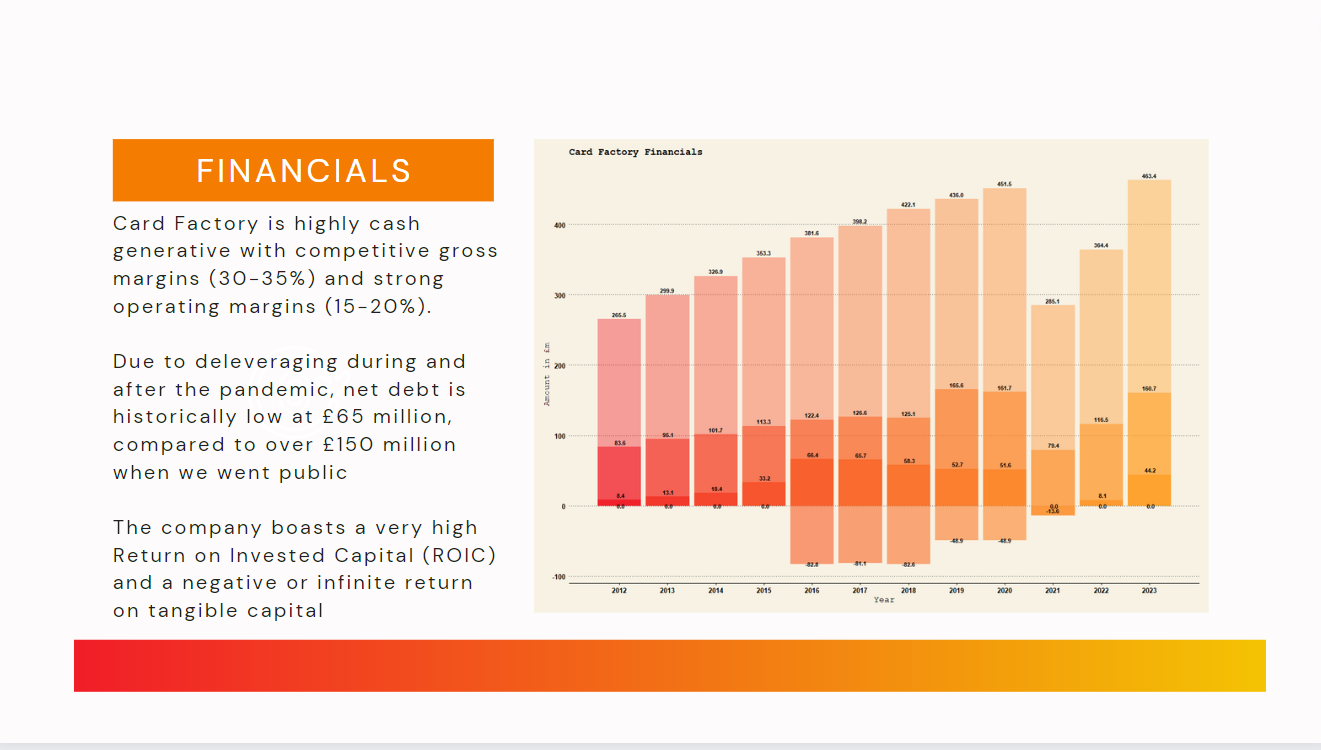
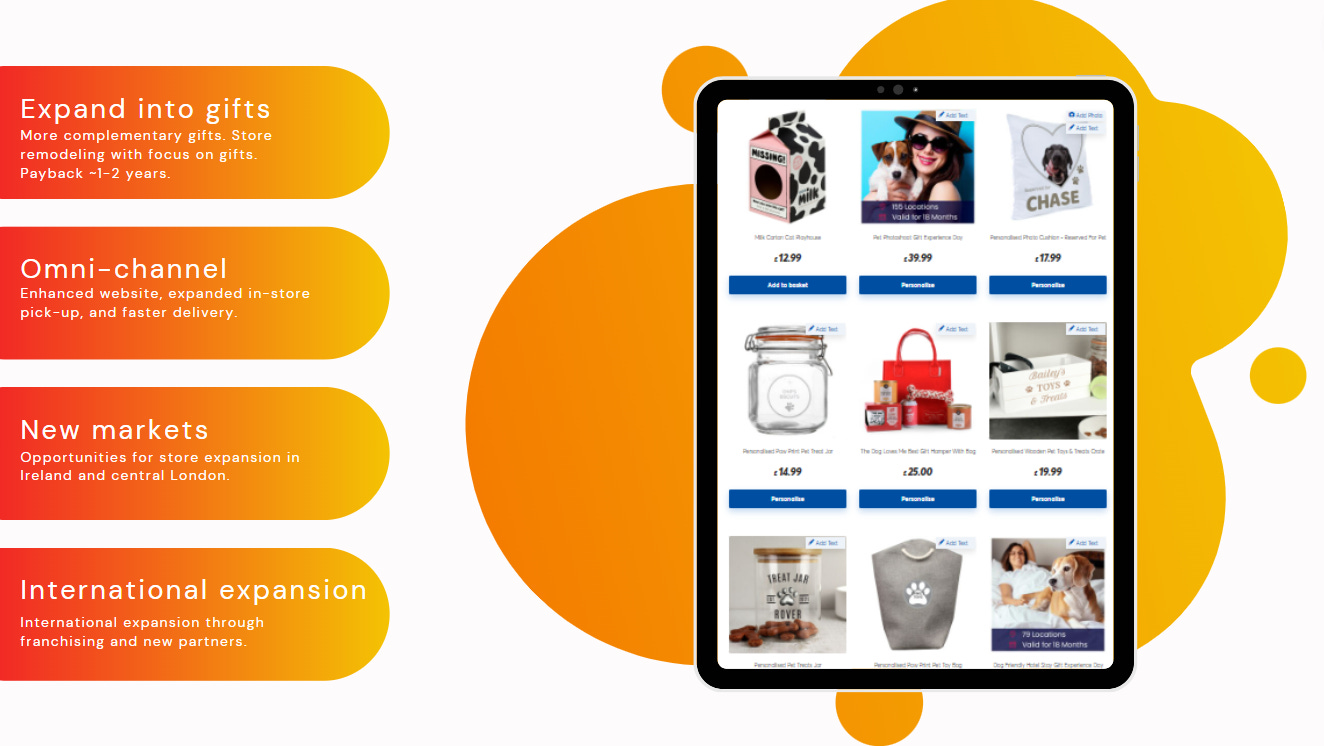
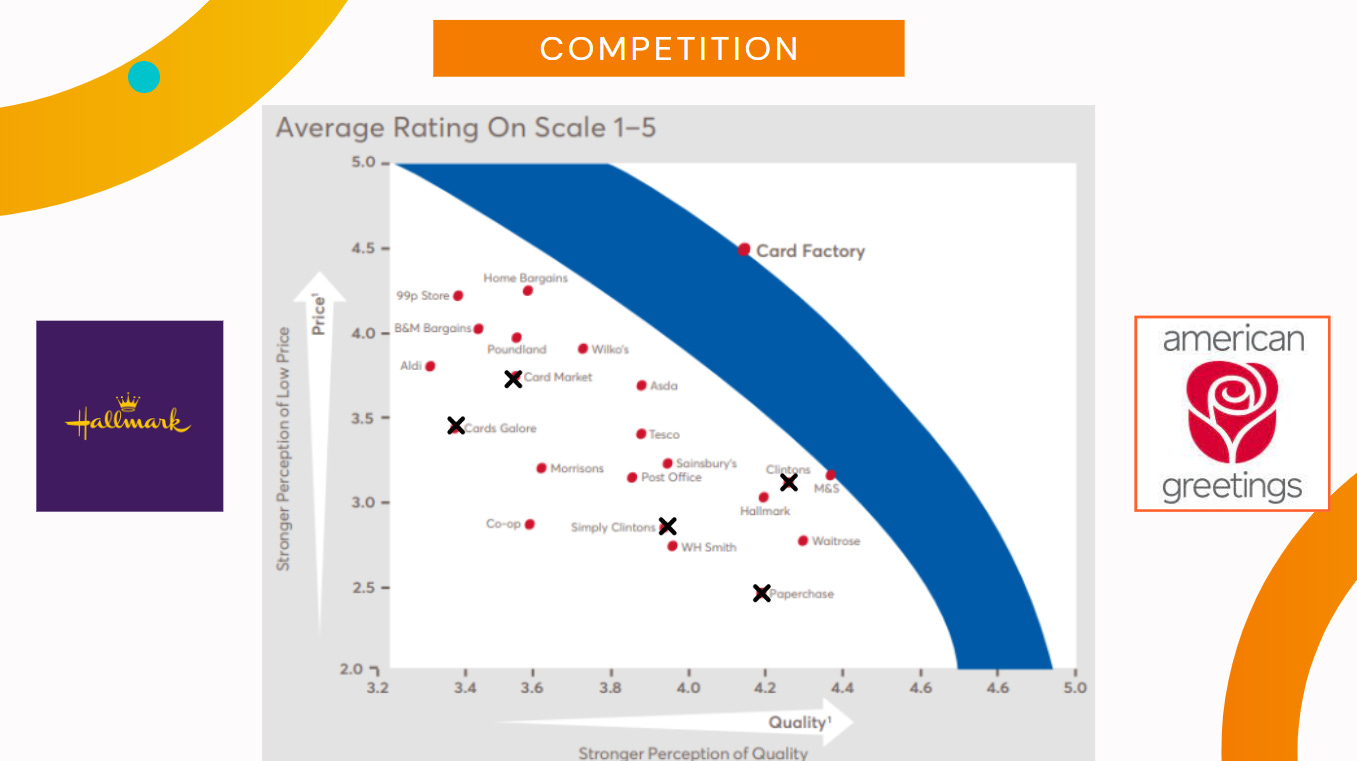
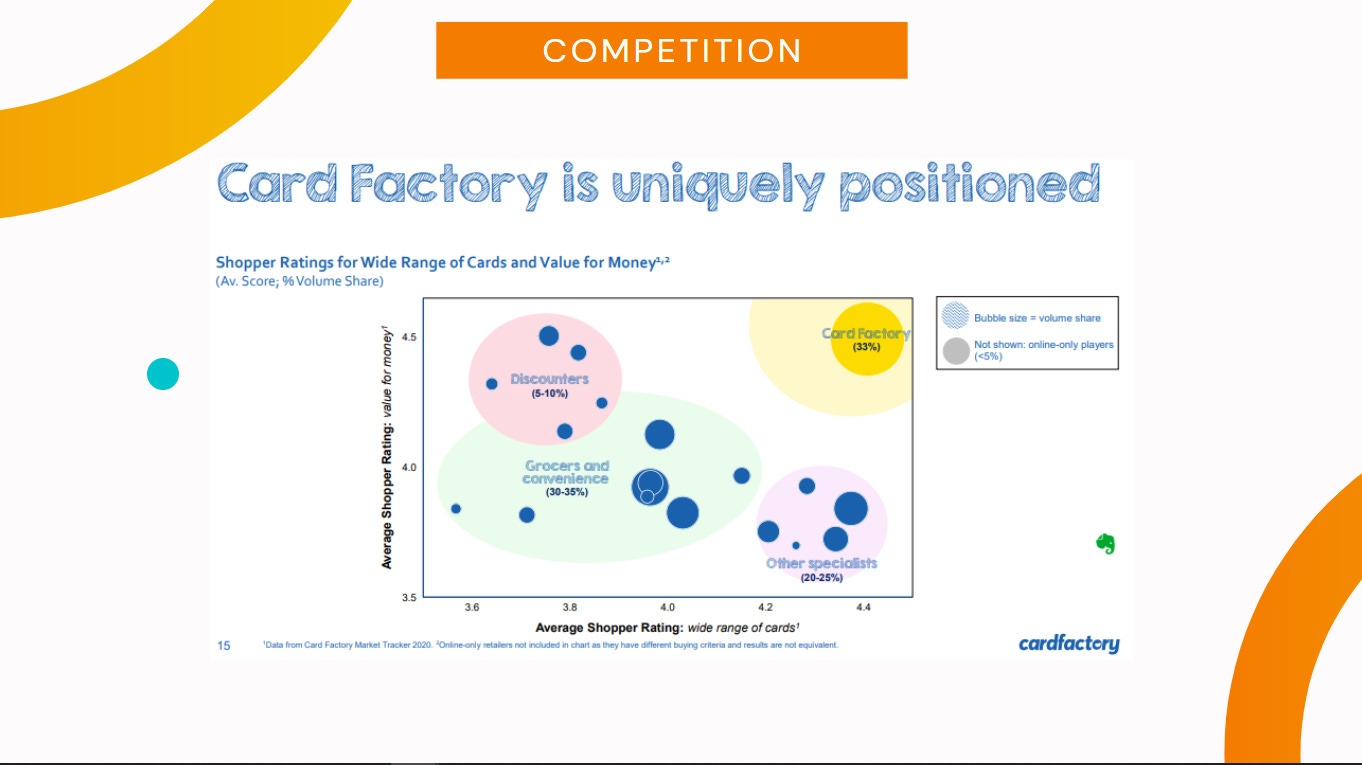
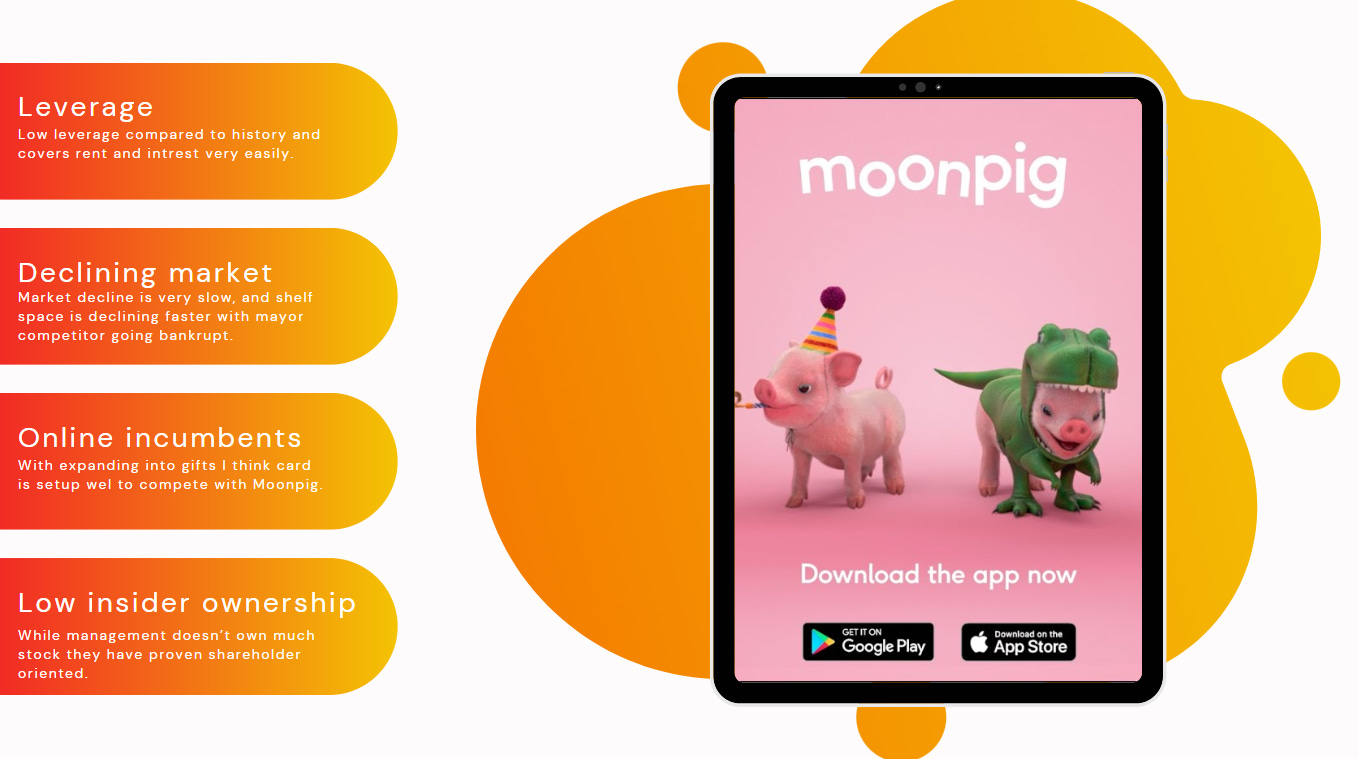

That sounds like a plan Iggy - and hopefully £3 is nearer than most expect!
Great video Iggy, everyone should watch this, it 100% concurs with my belief too that shese could multibag in the medium term, I've not seen an opportunity like this in 25 years hence it is my largest holding